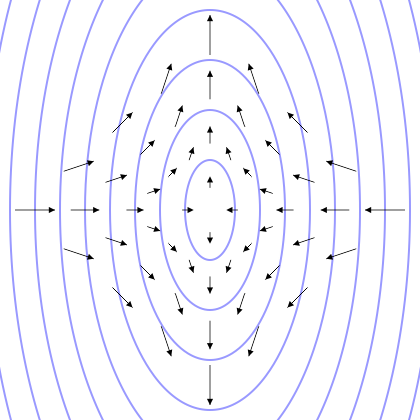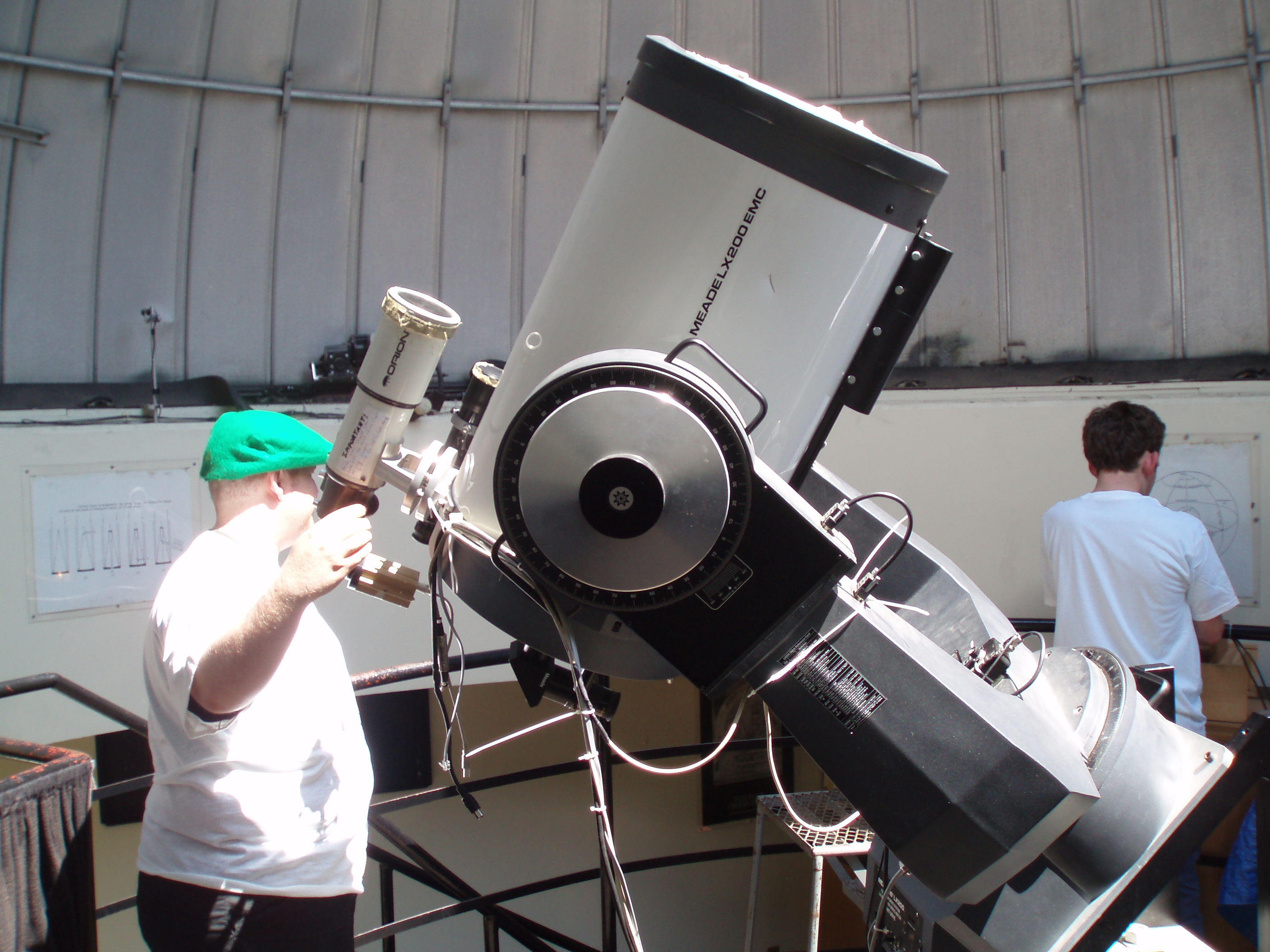|
Las Cumbres Observatory Global Telescope Network
Las Cumbres Observatory (LCO) is a network of astronomical observatories run by a non-profit private operating Foundation (charity), foundation directed by the technologist Wayne Rosing. Its offices are in Goleta, California. The telescopes are located at both northern and southern hemisphere sites distributed in longitude around the Earth. For some astronomical objects, the Longitude, longitudinal spacing of telescopes allows continuous observations over 24 hours or longer. The operating network currently consists of two 2 meter telescopes, nine 1 meter telescopes, and seven 40 cm telescopes, placed at six astronomical observatories. The network operates as a single, integrated, observing facility, using a software scheduler that continuously optimizes the planned observing schedule of each individual telescope. History Rosing incorporated Las Cumbres Observatory in 1993 with the goal of aiding universities, observatories, and individuals in the acquisition and ... [...More Info...] [...Related Items...] OR: [Wikipedia] [Google] [Baidu] |
Cerro Tololo Interamerican Observatory
The Cerro Tololo Inter-American Observatory (CTIO) is an astronomical observatory located on the summit of Mt. Cerro Tololo in the Coquimbo Region of northern Chile, with additional facilities located on Mt. Cerro Pachón about to the southeast. It is approximately east of La Serena, where support facilities are located. The principal telescopes at CTIO are the 4 m Víctor M. Blanco Telescope, named after Puerto Rican astronomer Víctor Manuel Blanco, and the 4.1 m Southern Astrophysical Research Telescope, which is situated on Cerro Pachón. Other telescopes on Cerro Tololo include the 1.5 m, 1.3 m, 1.0 m, and 0.9 m telescopes operated by the SMARTS consortium. CTIO also hosts other research projects, such as PROMPT (telescope), PROMPT, WHAM, and Las Cumbres Observatory Global Telescope Network, LCOGTN, providing a platform for access to the southern hemisphere for U.S. and worldwide scientific research. History In 1959, German astronomer Jürg ... [...More Info...] [...Related Items...] OR: [Wikipedia] [Google] [Baidu] |
Sutherland, Northern Cape
Sutherland is a town with about 2,841 inhabitants in the Northern Cape province of South Africa. It lies in the western Roggeveld Mountains in the Karoo. History Sutherland was founded in 1855 as a church and market town to serve the area's sheep farmers. By 1872 the town had a population of 138 registered citizens living in 19 houses. The large Dutch Reformed church in the centre of Sutherland was built in 1899. During the Anglo Boer War the church was used as a fort by garrisoned British soldiers. During the war a number of engagements between British and Boer forces occurred in the town. In one such engagement a force of 250 Boer commandos attacked the local British garrison for 10 hours. The ruins of a fort can be found on the outskirts of town on the hill called Rebelskop. This was named after this engagement. Economy Major economic activities include tourism and sheep farming. The area includes at least twelve registered B&B's, guest houses and guest farms. The n ... [...More Info...] [...Related Items...] OR: [Wikipedia] [Google] [Baidu] |
Gravitational Wave
Gravitational waves are oscillations of the gravitational field that Wave propagation, travel through space at the speed of light; they are generated by the relative motion of gravity, gravitating masses. They were proposed by Oliver Heaviside in 1893 and then later by Henri Poincaré in 1905 as the gravitational equivalent of Electromagnetic radiation, electromagnetic waves. In 1916, Albert Einstein demonstrated that gravitational waves result from his general theory of relativity as ripples in spacetime. Gravitational waves transport energy as gravitational radiation, a form of radiant energy similar to electromagnetic radiation. Newton's law of universal gravitation, part of classical mechanics, does not provide for their existence, instead asserting that gravity has instantaneous effect everywhere. Gravitational waves therefore stand as an important relativistic phenomenon that is absent from Newtonian physics. Gravitational-wave astronomy has the advantage that, unlike elec ... [...More Info...] [...Related Items...] OR: [Wikipedia] [Google] [Baidu] |
Asteroids
An asteroid is a minor planet—an object larger than a meteoroid that is neither a planet nor an identified comet—that orbits within the Solar System#Inner Solar System, inner Solar System or is co-orbital with Jupiter (Trojan asteroids). Asteroids are rocky, metallic, or icy bodies with no atmosphere, and are broadly classified into C-type asteroid, C-type (carbonaceous), M-type asteroid, M-type (metallic), or S-type asteroid, S-type (silicaceous). The size and shape of asteroids vary significantly, ranging from small rubble piles under a kilometer across to Ceres (dwarf planet), Ceres, a dwarf planet almost 1000 km in diameter. A body is classified as a comet, not an asteroid, if it shows a coma (tail) when warmed by solar radiation, although recent observations suggest a continuum between these types of bodies. Of the roughly one million known asteroids, the greatest number are located between the orbits of Mars and Jupiter, approximately 2 to 4 astronomical unit, AU ... [...More Info...] [...Related Items...] OR: [Wikipedia] [Google] [Baidu] |
Exoplanets
An exoplanet or extrasolar planet is a planet outside the Solar System. The first confirmed detection of an exoplanet was in 1992 around a pulsar, and the first detection around a main-sequence star was in 1995. A different planet, first detected in 1988, was confirmed in 2003. In 2016, it was recognized that the first possible evidence of an exoplanet had been noted in 1917. In collaboration with ground-based and other space-based observatories the James Webb Space Telescope (JWST) is expected to give more insight into exoplanet traits, such as their composition, environmental conditions, and potential for life. There are many methods of detecting exoplanets. Transit photometry and Doppler spectroscopy have found the most, but these methods suffer from a clear observational bias favoring the detection of planets near the star; thus, 85% of the exoplanets detected are inside the tidal locking zone. In several cases, multiple planets have been observed around a star. A ... [...More Info...] [...Related Items...] OR: [Wikipedia] [Google] [Baidu] |
Supernovae
A supernova (: supernovae or supernovas) is a powerful and luminous explosion of a star. A supernova occurs during the last evolutionary stages of a massive star, or when a white dwarf is triggered into runaway nuclear fusion. The original object, called the ''progenitor'', either collapses to a neutron star or black hole, or is completely destroyed to form a diffuse nebula. The peak optical luminosity of a supernova can be comparable to that of an entire galaxy before fading over several weeks or months. The last supernova directly observed in the Milky Way was Kepler's Supernova in 1604, appearing not long after Tycho's Supernova in 1572, both of which were visible to the naked eye. The remnants of more recent supernovae have been found, and observations of supernovae in other galaxies suggest they occur in the Milky Way on average about three times every century. A supernova in the Milky Way would almost certainly be observable through modern astronomical telescopes. Th ... [...More Info...] [...Related Items...] OR: [Wikipedia] [Google] [Baidu] |
Meade Instruments
Meade Instruments Corporation (also shortened to Meade) was an American multinational corporation, multinational company (law), company headquartered in Watsonville, California, that manufactured, imported and distributed telescopes, binoculars, spotting scopes, microscopes, charge-coupled device, CCD cameras, and telescope accessories for the consumer market. It was, at one point, the world's largest manufacturer of telescopes. Besides selling under its "Meade" brand name, the company sells solar telescopes under the brand "Coronado". In July 2024, Sky and Telescope magazine reported that Optronic Technologies, the owner of Meade Instruments and Orion Telescopes, had closed their facilities in California and had laid off all of their employees. As of July 15, there had been no official announcement from the company, and S&T said they were trying to get more information from their sources. As of December, 2024, the Sky&Telescope website announced that the assets of Meade, Corona ... [...More Info...] [...Related Items...] OR: [Wikipedia] [Google] [Baidu] |
LCOGT 40cm
Las Cumbres Observatory (LCO) is a network of astronomical observatories run by a non-profit private operating foundation directed by the technologist Wayne Rosing. Its offices are in Goleta, California. The telescopes are located at both northern and southern hemisphere sites distributed in longitude around the Earth. For some astronomical objects, the longitudinal spacing of telescopes allows continuous observations over 24 hours or longer. The operating network currently consists of two 2 meter telescopes, nine 1 meter telescopes, and seven 40 cm telescopes, placed at six astronomical observatories. The network operates as a single, integrated, observing facility, using a software scheduler that continuously optimizes the planned observing schedule of each individual telescope. History Rosing incorporated Las Cumbres Observatory in 1993 with the goal of aiding universities, observatories, and individuals in the acquisition and improvement of telescopes, opt ... [...More Info...] [...Related Items...] OR: [Wikipedia] [Google] [Baidu] |
Ngari Prefecture
Ngari Prefecture () or Ali Prefecture ( zh, s=阿里地区 , t=阿里地區 , p=Ālǐ Dìqū) is a prefecture of China's Tibet Autonomous Region covering Western Tibet, whose traditional name is Ngari Khorsum. Its administrative centre and largest settlement is the town of Shiquanhe. It is one of the least densely populated areas in the world, with 0.4 people per square kilometer (1.0 per square mile). History In ancient times, Ngari was known as Zhangzhung. The Zhangzhung kingdom extended over much of western Tibet, until its conquest by the Tibetan Empire under Songtsen Gampo. Zhangzhung sites, such as its capital Khyung-lung dngul-mkhar, are traditionally believed to be closely associated with the development of Bon, the indigenous Tibetan religion. According to Bon tradition, the religion first spread to Zhangzhung from the semi-mythical lands of Olmo Lungring and Tagzig. Thereafter, Bon doctrines were transmitted to central Tibet. Archaeological evidence demonstrated a ... [...More Info...] [...Related Items...] OR: [Wikipedia] [Google] [Baidu] |






